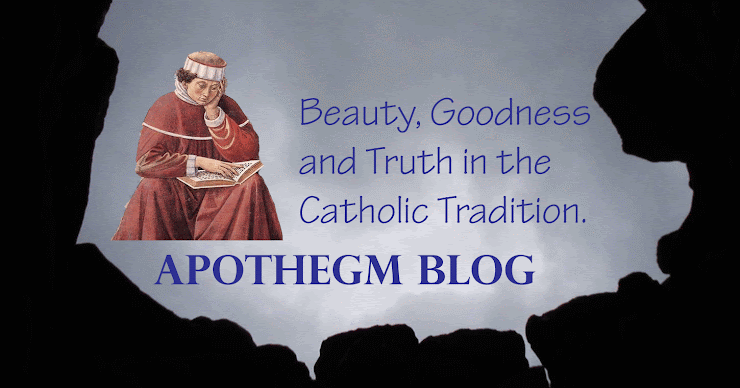
The title Dei Verbum means "The Word of God" in Latin. On November 18th, 1965 Dei Verbum received 2,344/2350 votes. This was a peaceful end to what had been a three year long debate on the floor of the council. The schema Dei Verbum went through a series of editorial changes before finally receiving a positive endorsement by the bishops of the council. The versions of schema have been labeled Texts A through G.
Stage One –preparatory (Text A, B –original schema + some revision)
The preparatory Theological Commission under the leadership of Cardinal Ottaviani (Prefect of the Holy Office) worked to prepare a schema which unfortunately was heavily influenced by the views of the "Roman School" of scholastic theology typified by the theological colleges in Rome at this time. The schema was likely authored by Sebastian Tromp SJ.
At the same time a massive and open ended consultation with the world's bishops was taking place. Bishops where consulting theologians on current issues and invited many of them to the council as periti (experts). These experts included Yves Congar, Karl Rahner, Joseph Ratzinger, Marie-Dominique Chenu, Henri de Lubac; Edward Schillebeeckx, Hans Küng, Luis Alonso Schökel, and Barnabas Ahem.
Stage Two –the presentation of the draft schema (Text C) at the council
Much to the surprise of Cardinal Otavianii, the schema met with immediate opposition from prominent Cardinals. Cardinal Achille Liénart of Lille France delivered a strong rejection of the schema, and he was followed by Cardinals Joseph Frings (Cologne); Paul Léger (Montreal), Franz König (Vienna); Bernard Alfrink (Utrecht), Leo Suesens (Brussels), Joseph Ritter (St. Louis) finally Cardinal Bea. Objections were made both to the tone of the document and to its content.
Father Joseph Komonchak has outlined three major points of disagreement.[1]
The draft schema favored the view that Scripture and Tradition were two separate sources, and that "tradition handed on revealed truths not found in the Scriptures". Questions were raised concerning the correspondence of the two source notion with previous dogmatic understanding.
Second issue involved the legitimacy of the use of historical-critical methods in biblical interpretation. The draft schema was very restrictive and suspicious of the new Biblical scholarship which had emerged after Pope Pius XII issued his encyclical Divino Afflante Spiritu.
The third issue revolved around "the question of what it meant for the council to be pastoral." Bishops who were critical of this term "argued that this ran contrary to the whole tradition of ecumenical councils, whose main purpose had always been stating and defending the faith; after the council bishops and priests could worry about communicating it to the faithful." Those who argued in favor of this term argued for the legitimacy of "reappropriating the tradition" for the modern world since "fidelity to the doctrinal heritage and effective communication were inseparable tasks."
The interventions by Cardinal Bea were most significant since he was the President of Secretariat for Promoting Christian Unity which the Pope was about to declare was a councilor commission of equal rank with the others.[2]
Looking back Joseph Ratzinger comments;[3]
The text was, if one may use the label, utterly a product of the "anti-modernist" mentality that had taken shape bout the turn of the century. . . The same cramped thinking, once so necessary as a line of defense, impregnated the text and informed it with a theology of negations and prohibitions; although in themselves they might well have been valid, they certainly could not produce that positive note which was now to be expected of the Council.
A poorly worded and confusing vote was taken and 61% of the bishops rejected the schema but this was short of the two thirds needs to carry the motion. Eventually the Pope intervened and ordered the original schema set aside and a new shorter schema to be written jointly chaired by Cardinals Ottaviani and Bea. Pope John XXIII created a mix commission of the two opposing camps and forced them to work it out. This commission prepared Text D
Stage Three –a lengthy time at the second and third sessions (1963, 1964)
At the second session there were no plenary discussions of the schema but written recommendations were presented. Pope Paul VI influenced the completion of the schema now renamed "On Divine Revelation," and then later "Dogmatic Constitution on Divine Revelation." The initial reception by the bishops was quite positive. Questions were raised about the language used to describe the material sufficiency of Scripture and its relation to Tradition and concerning the nature of inspiration and its relation to inerrancy. Text D was revised into Text E. After discussion in the 1964 third session this text was revised into Text F.
Stage Four—Text F was presented and revised into Text G
In the midst of the council the Pontifical Biblical Commission issued a document entitled, "Instruction on the Historical Truth of the Gospels" (April, 1964). Although warning about possible exaggerated uses of the historical-critical method, the text affirms the use of form-criticism and redaction-criticism. These affirmations in turn had an impact on the wording of Dei Verbum articles 12, and 19. On November 18th, 1965 the text of Dei Verbum received a more than 99% endorsement from the bishops and was immediately promulgated by Pope Paul VI.
___
[1] Father Joseph Komonchak, "Is Christ Divided: Insights from Vatican II for Dealing with Diversity and Disagreement" Origins 33.9 –accessed online.
[2] History of Vatican II ed. by Giuseppe Alberigo, Vol 2. 243.
[3] Theological Highlights of Vatican II (1966) p 20-21.











